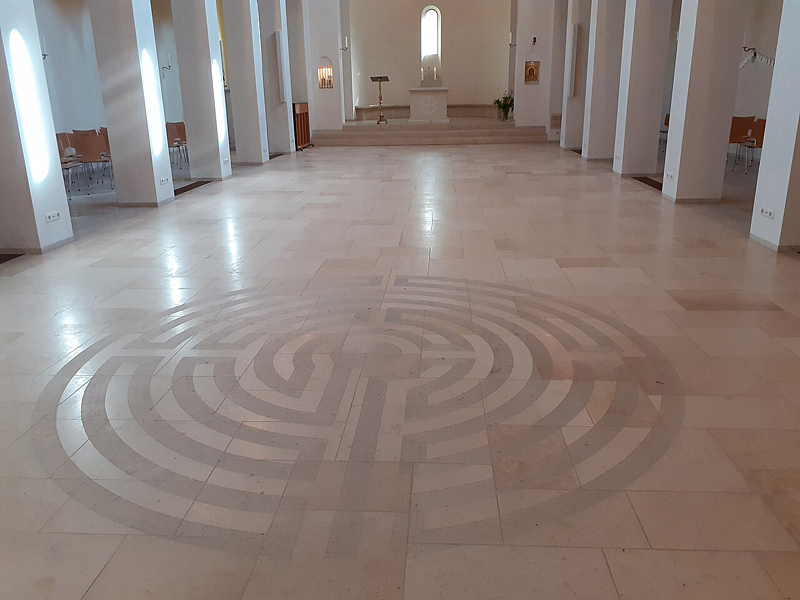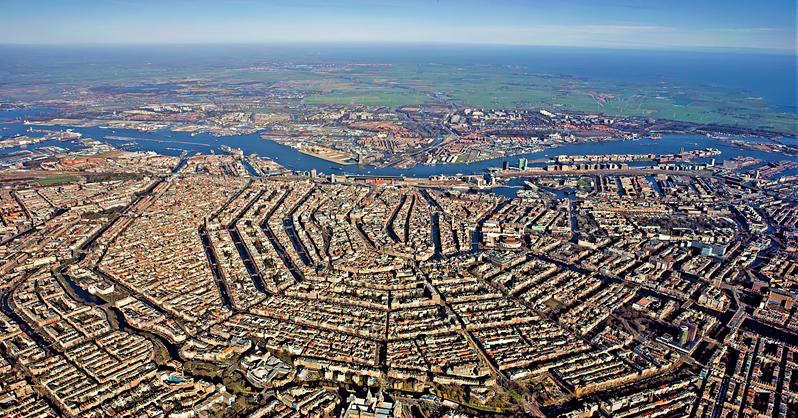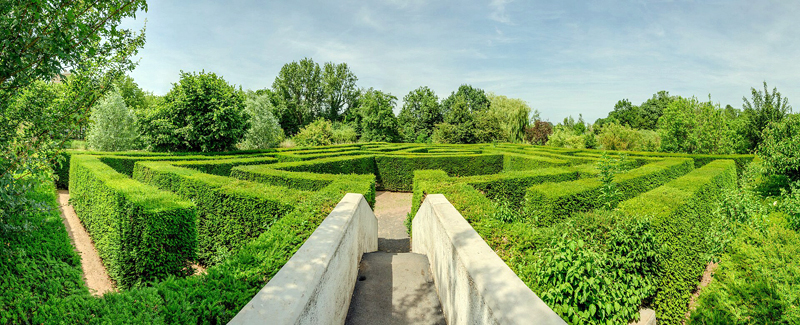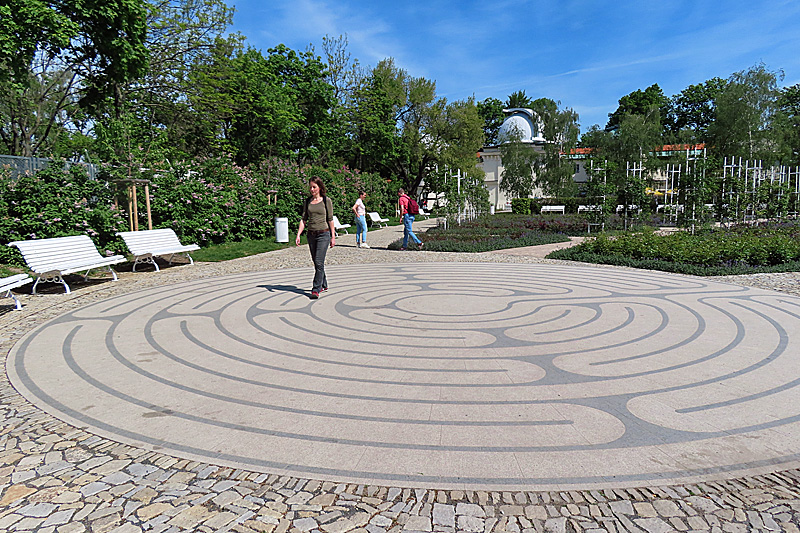In Search of Labyrinths and Mazes in Amsterdam
Amsterdam has two physical labyrinths, one in the Onze Lieve Vrouwe Gasthuis and the other at the Sloterplas. With a bit imagination you can see that the canal belt also resembles a labyrinth. There is also a written labyrinth. During his exile in Amsterdam, Jan Amos Comenius wrote: The Labyrinth of the World, a philosophical metaphor for the human journey.

Labyrinths and Mazes in Amsterdam
Labyrinth in the Onze Lieve Vrouwe Gasthuis
The classic place for a labyrinth in a church is at the entrance. As soon as you enter the chapel of the OLV Gasthuis, you will immediately see the labyrinth on the floor.
Though small and a bit tricky to walk due to its size, it draws inspiration from the labyrinth in the Basilica of San Vitale in Ravenna, Italy.
Address: Oosterpark 9
Labyrinth Sloterplas
Tucked behind a low wall, this labyrinth feels like a hidden gem. Sit on the nearby bench and trace the pathway with your eyes or feet. The weathered lines add to its mystery, making the journey to the centre more contemplative.

Labyrinths Inspired References
Amsterdam’s Canal Belt
Walk the entire length of the Prinsengracht, then Keizersgracht, Herengracht and Singel and you will end up at Central Station. With a little imagination, and especially when you look at the map of Amsterdam, you will see a series of semi-circular canals takes on the shape of a labyrinth.
The Labyrinth of the World – Comenius
The Czech philosopher Jan Amos Comenius (1592-1670) exiled for his religious beliefs, found refuge in Amsterdam. There, he wrote The Labyrinth of the World, a symbolic account of life’s spiritual and moral struggles. He died in Amsterdam but is buried in the mausoleum in the former Walloon church in Naarden.

Where to Find Mazes in Amsterdam?
Amstelpark Maze
The maze is located on a concrete island and is a classic hedge maze with yew trees almost two metres tall. It is made up of long straight corridors junctions and dead-ends. The entrance is via a concrete bridge with the entrance on the lower level and the exit above. The distorting mirrors have disappeared, but the maze still offers a fun challenge.
Amsterdamse Bos Maze
This is a ‘design’ maze and created by the Brit Adrian Fisher, maze designer. It features 15 angular corners formed by beech hedges. There are five junctions ensure you always end up in the centre, making it a hybrid between a maze and a labyrinth.
Are you hooked on Labyrinths?
Prague prides itself in three labyrinths and three mazes. The London Underground features finger labyrinths. Pictures of a labyrinth are on the wall in all underground stations. Commuters can trace the path to the centre with a finger while waiting for their train.
What is a labyrinth?
A labyrinth consists of winding paths that may appear chaotic, but they all ultimately lead to a single centre. A maze is designed to confuse with dead ends and multiple paths whereas a labyrinth guides you gently toward your goal.
In short:
Labyrinth: one continuous path to the centre (no wrong turns)
Maze: complex paths with junctions and dead ends (you can get lost)
The labyrinth is often seen as a symbol of life’s journey: a meditative walk which brings understanding and inner peace.
Photo: Labyrinth on Petrin Hill in Prague.

Hidden Gems in the Chapel of the Onze Lieve Vrouwe Gasthuis
The labyrinth in the chapel is the main attraction but there is more to see. Located in a niche to the right of the altar, this icon, believed to be not made by human hands, shows the true face of Christ. His long hair and parted beard are classic traits. The image is said to have been transferred to a cloth used to wipe Christ’s sweat.
To the left of the entrance you see an icon with the image of Saint Nicholas, patron saint of sailors and of the city of Amsterdam. In the baptismal chapel is the resurrection icon with images of an Easter candle, a baptismal font and a window, symbols for light, water and life.
The Mary icon (photo below) in the Holy Mary Chapel is an 18th century icon of the Mother of God of Tikhvin. Mary holds the child Jesus, who faces her with a scroll in one hand and a blessing gesture in the other. The visible sole of Jesus’ foot symbolizes the suffering he would endure.


